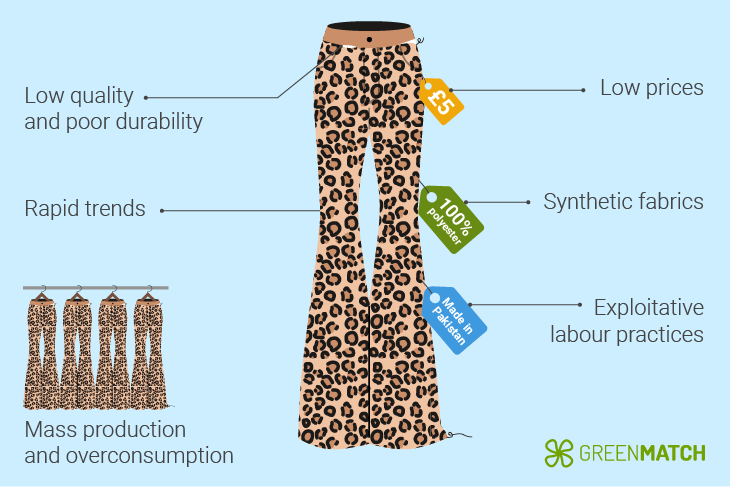The Detrimental Effects of Fast Fashion
Fast fashion significantly impacts the environment, economy, and social structures around the globe. This article delves into its negative ramifications, emphasizing the urgent need for change in the fashion industry.
Environmental Damage
Fast fashion is one of the world’s largest polluters. It contributes to heavy environmental degradation, from excessive water usage and pollution to waste generation. According to a report from GreenMatch, the fashion industry is the second largest polluter following the oil industry.

Graph showing the environmental impacts of fast fashion.
Source: GreenMatch
Fast fashion brands often rely on cheap production processes that consume vast amounts of water and chemicals. For instance, it is estimated that producing a pair of jeans requires upwards of 7,500 liters of water due to the dyeing and washing processes involved.
Labor Exploitation and Ethical Concerns
The fast fashion model thrives on low production costs, often achieved by outsourcing labor to countries with minimal regulations. Workers in these factories frequently endure inhumane conditions, with low pay and long hours being typical. A Miik article explains how the invisibility of these laborers hides the gross exploitation at the core of the industry.

Visual representation of worker exploitation in fast fashion.
Source: Miik
The industry’s demand for quick turnarounds fosters a toxic culture, where profit outweighs the welfare of workers. The working conditions often fell short of acceptable standards, leading to dangerous environments.
Consumerism and Waste
Fast fashion promotes a throwaway culture where clothing items are seen as disposable. The REDRESS RALEIGH organization emphasizes that this cycle of quickly purchasing and discarding clothes leads to increased waste. Studies indicate that Americans throw away about 80 pounds of clothing per person each year, a shocking statistic highlighting the unsustainable nature of fast fashion.

An image depicting clothing waste overwhelming landfills.
Source: REDRESS RALEIGH
This rampant consumerism fills landfills with clothing that could have been recycled or repurposed. Fast fashion companies produce vast numbers of garments that often end up discarded after only a few wears. This linear model of consumption does not fit within a circular economy, further complicating environmental challenges.
Economic Implications
The low prices offered by fast fashion brands often undermine local economies and traditional artisanship. As the focus shifts towards mass production and cheaper materials, skilled artisans find it increasingly difficult to compete. This situation leads to a loss of cultural heritage and craftsmanship that is irreplaceable. The Investopedia discusses how while consumers benefit from low prices, the long-term effects on economies are negative.
:max_bytes(150000):strip_icc()/fast-fashion-6d4aa773355b42c69c545bef9c9747a1.jpg)
Depiction of economic impacts stemming from fast fashion practices.
Source: Investopedia
Conclusion
The negative impacts of fast fashion extend beyond the clothes we wear. It is a complex issue involving environmental degradation, labor exploitation, consumer waste, and economic instability. While individuals can make a difference through conscious purchasing, systemic change is required to reform the industry. Shifting towards sustainable and ethical fashion practices will not only benefit the planet but will also protect the rights and wellbeing of individuals involved in garment production.